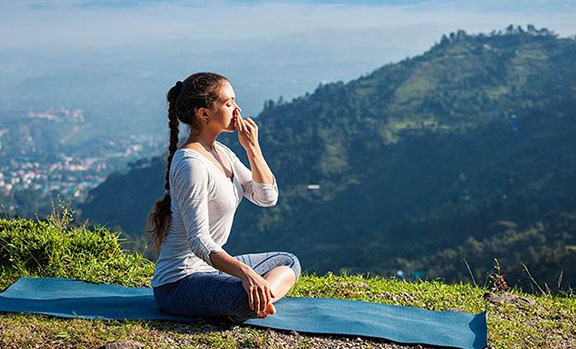 “Breath is the bridge which connects life to consciousness, which unites your body to your thoughts.” ~Thich Nhat Hahn
“Breath is the bridge which connects life to consciousness, which unites your body to your thoughts.” ~Thich Nhat Hahn
Vera was shocked when her boyfriend told her he wouldn’t ask her out again because she always agreed with him. He said she never had any ideas of her own. A few weeks later, Vera decided to see a therapist and she walked into my office like someone stepping on egg shells. After a short silence, I asked what brought her to therapy, and she said, “My boyfriend broke up with me because I’m too nice, I guess.” I asked, “Too nice?” “Yes. Too nice,” she replied. For the next several weeks she kept telling me she was “just fine,” and agreed with everything I said. Sometimes I saw her looking at me intently, with longing, and I felt sad for her and worried.
Finally, she said something was bothering her. “I have a lot of nightmares, is that normal? When I was little I used to pull the covers over my head; I used to hold my breath and become invisible so the monsters couldn’t get me.” I wanted to help Vera get in touch with her body and relax, so she could feel less afraid. I suggested she try a Hatha Yoga class. She said she hated Yoga but would look into it. I knew she probably wouldn’t. I decided to work with her breath patterns, and waited for a time when she looked a little less threatened than usual. How we breathe is personal and intimate—I didn’t want to be intrusive.
People who are anxious breathe from the chest—it’s part of the fight or flight mechanism, which is useful in an emergency. Anxious individuals always feel like they are in an emergency, however, and chest breathing creates a body that is ready to react to danger all the time. It becomes habituated to taking quick, short breaths; a vicious loop begins, and soon the body is in a continually stressed state. This was Vera.
One day I asked Vera if she would like to try beginning her therapy sessions with a brief centering experience, using the breath. At first she didn’t like the attention to her belly, which she thought was too big. Learning to relax her abdomen was a chore—she was used to sucking in her gut so she could wear tight jeans—but eventually she got it.
We all start life breathing from the diaphragm. Anyone who has ever watched an infant, dressed only in a diaper and lying on its back, can see the process very clearly. Belly goes out, ribs expand, collar bone goes up—that’s an inhale. Collar bone goes down, ribs go in, belly goes in—that’s an exhale. You can actually see the baby’s diaphragm move. Vera’s diaphragm barely moved at all, she mostly took short breaths from the upper chest. Chest breathers need to relearn and consciously practice diaphragmatic breathing (deergha swaasam). Diaphragmatic breathing stills the mind, creating a feeling of peace and spaciousness, providing a perspective from which to view experience and investigate thoughts and feelings, time and space in
the moment.
Starting our meetings with deergha swaasam helped us connect to each other and to ourselves. Vera became more attuned to her body’s hints when she was beginning to feel anxious and learned to identify and enjoy the feeling of slow complete breaths, the energy of the in-breath, and the deep relaxation of the out-breath. Breath work and therapy together enabled her to feel safe inside. Deergha swasam was her secret weapon to fight anxiety. Feeling peaceful in a safe place with another person, as we breathe with our original, individual, primordial rhythm, signals the deep Self to emerge and to feel accepted. Breath is both automatically and consciously controlled—a sacred bridge between body and mind.
By Lynn Anjali Somerstein, PhD, RYT
From: Integral Yoga Magazine, Fall 2010

Lynn Anjali Somerstein, PhD, RYT, is a psychotherapist in private practice in Manhattan and a teacher at the Integral Yoga Institute of New York. She was the Director of the Institute for Expressive Analysis for six years. Her current interests include using the breath and meditation to allay anxiety, stress and depression. She’s published many articles and addressed many conferences in the US and abroad, including India, Turkey and at the University of Beijing, where she taught how to use the breath to allay anxiety in the psychotherapeutic encounter. For more information, please visit: lynnsomerstein.com.

